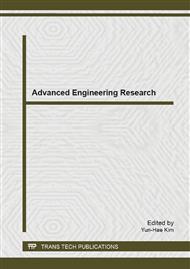p.867
p.871
p.875
p.879
p.883
p.887
p.891
p.895
p.900
Finite Element Analysis of Distinguish between Two Bone Materials in Femoral Fixation System
Abstract:
This paper deals with the difference of finite element analysis of results between distinguishing bone materials modeling and single bone material modeling. The computed tomography (CT) data was used to build the model that can distinguish cortical bone, cancellous bone of the femur model, together with the plates could be used to set up internal fixation system and do the finite element analysis. The results indicated that the distributions of stress and strain were basically the same, so were the location of the maximum stress and strain. While, except under the axial loads the value of maximum stress and the value of maximum strain showed significant differences. Finally, study reached the conclusion that under the axial loads there were no significant difference between the two methods, thus the single bone material model could be used for easier computing, while, under the other 4 consequences paper recommended distinguishing bone material method for more practical results.
Info:
Periodical:
Pages:
883-886
Citation:
Online since:
April 2014
Authors:
Price:
Сopyright:
© 2014 Trans Tech Publications Ltd. All Rights Reserved
Share:
Citation:


